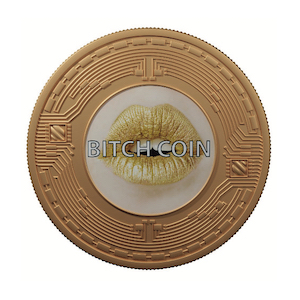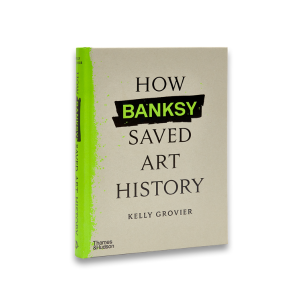London’s Big City Attractions and Its Smaller Cousins
By Timi Ayeni
London; one of the most famous cities in the world. Many know the key hotspots, and the attractions we certainly know of such as The London Eye and Madame Tussauds in Baker Street which receive a ton of visitors every year. Often Londoners know a few insider ‘secrets” but some places are just a little bit cooler than just the guidebook’s obvious choices, Find out more in London’s Big City Attractions and its Smaller Cousins
The city of London was founded by the Romans, and their rule extended from 43 AD to the fifth century AD. Londinium was thought to be named in the first century CE and was the commercial centre in Roman Britain.

The Romans had a population of 50,000, mainly due to the influence of its major port and early Roman London occupied a relatively small area, roughly equivalent to the size of Hyde Park today.
Map of Roman London (Londinium)
During the 2nd century, Londinium was at its height and replaced Colchester as the capital of Roman Britain (Britannia).
The population around the time was around 60,000 inhabitants and had major public buildings, including the largest basilica north of the Alps, temples, bath houses, an amphitheatre, and a large fort. With troubles and wars, the Romans built a wall all around the city.
Roman London Wall
The wall would survive and define the City of London’s perimeters for centuries to come, and even now the perimeters of the present City are roughly defined by the line of the ancient wall.
Because of Anglo-Saxon invasions during the fifth century, Londinium declined and during the eighth century; it became the capital of the Kingdom of Essex as the town suffered numerous Viking attacks in the 19th Century.
In 1067, following the Norman invasion and conquering of England, the city’s existing rights, laws and privileges were established by the newly crowned King of England, William Duke of Normandy as The Tower of London was built during William’s reign.

Tower of London
A few years later, King John reinforced the city’s self-government, and in 1215 the city could elect a different mayor every year. London had no capital city at the time as institutions of central government were moved to Westminster, close to London which led to the rise of trade in the area as London’s emergence became the capital of England.
Top historical buildings in London
Tower Bridge
This bridge was constructed in 1886 by John Wolfe Barry who designed it to give an access to the East end of London with movable roadways that lifts for passing ships and vessels crossing through the river Thames.

Tower Bridge
Rules Restaurant
It was founded in 1798 as an oyster bar by Thomas Rule and it is London’s oldest restaurant.
Rules Restaurant
It was owned by three families that have ran the restaurant for generations and John Mayhew is currently the owner of the restaurant who bought it from the Bell family in 1984.
The interior in the restaurant has barely changed under three owners over two centuries: glue-like mahogany cladding, plush velvet, and walls covered in caricatures which is attractive and alluring to diners and foodies.
Berry Bros. & Rudd
It is the oldest wine and spirit merchant in London which has been built since 1698 by the Widow Bourne who was a widow and a mother, with at least two daughters, but only her last name is known.

Berry Bros. & Rudd
The Widow Bourne was established as a grocer in the prestigious neighbourhood opposite St. James’s Palace, which in that year became the official principal residence of the monarch.
All Hallows by the Tower
It is often cited as the oldest church in the City of London unlike other early churches, All Hallows has a definitive founding date backed up by well-kept records which was established in 675 CE by the Abbey of Barking and was originally named All Hallows Barking.
All Hallows by the Tower
The Postal Museum
The Postal Museum was built in the early 20th century and was opened to the public in 1969 by Her Majesty Queen Elizabeth II
The Postal Museum
It is owned by the Postal Heritage Trust which began in 2004 as The British Postal Museum & Archive and was renamed as The Postal Museum in 2017.
Isokon Building
This building was known as the place where ‘queen of crime’ Agatha Christie lived and wrote some of her best-known works such as The Murder on the Orient Express (1934) and Death on the Nile (1937)
Isokon Building
It was also the very first modernist block in London which ran a 1930s experiment in minimalist design that attracted artists, spies and Bohemians including the founder of the Bauhaus, Walter Gropius.
Wilton’s Music Hall
The Music Hall was built in 1859 as the Victorian Music Hall, which was later renamed to Wilton’s Music Hall after John Wilton.
Wilton’s Music Hall
In the mid 19th-century, he decided to extend an existing pub and bring West End entertainment to the people of the East End, creating a gas-lit fun palace where famous performers such as George Leybourne and Madam Senyah once graced the stage.
There are still performances that are reviving the old East End entertainment for the 21st century ranging in from the reimagined Gilbert and Sullivan to Shakespeare and Cabaret.
Eltham Palace
The Palace was built in 1936 by Rolf Engströmer and it is known for its flamboyant display of wealth and social standing as the decor was designed for socialites Stephen and Virginia Courtauld who lived with their pet lemur, Mah-Jongg in the 1930s.
Eltham Palace
Crossness Pumping Station
The station was designed by the Metropolitan Board of Works’s chief engineer Sir Joseph Bazalgette and architect Charles Henry Driver. Built between 1859 and 1865, it was part of Bazalgette’s solution to ‘de-stink’ the city.
Crossness Pumping Station
Inside the station is a dizzying display of vivid colours and patterns that has to be seen to be believed, resembling a Persian palace or a steampunk dream.
Pickering Place
London’s smallest square is the last place in England where a duel was fought.
The alley is lined with dark wooden panels and lit by its original gaslight, and it’s said that the secluded square was once a magnet for illicit activity, from terrible blood sports such as bear baiting to gambling and duels.
Pickering Place
Now that we have covered the top historical buildings around London, there is an upcoming book by Sheldon K. Goodman titled ‘An Opinionated Guide to Historic London’ coming out on the 7th of September and distributed by the Hoxton Mini Press.
The book uncovers popular places such as: the Victoria sewage pumping station which resembles a Persian palace; the hidden corridors above St. Paul’s, London’s smallest square and the last place in England where a duel was fought; an ornate Victorian lavatory which is now a cafe, and the Handel Hendrix House; a museum on Brook Street where two musical icons Jimi Hendrix and George Frideric Handel were neighbours two centuries apart.
To find out more about the book An Opinionated Guide to Historic London, visit here
London has been ranked the most popular city among tourists across the globe yet there are still great secrets to be found not just by tourists but for the city’s dwellers too.
If you enjoyed reading London’s Big City Attractions and its Smaller Cousins, why not read The Light Shines Bright and Beautiful
. Cent magazine London, Be Inspire; Get Involved
















